#Nesta Obermer
Photo


Nesta Obermer (deceased)
Gender: Female
Sexuality: Bisexual
DOB: 14 September 1893
RIP: 3 October 1984
Ethnicity: White - British
Occupation: Philanthropist, playwright, artist
#Nesta Obermer#lgbt history#bisexual history#lgbt#lgbtq#female#bisexual#1893#rip#historical#white#philanthropist#playwright#artist
42 notes
·
View notes
Text
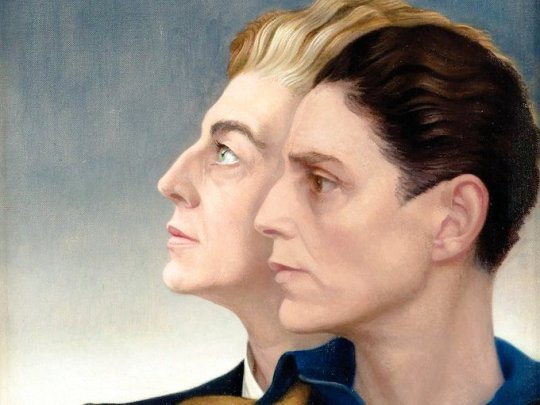
Medallion (1937) by Gluck, self-portrait by the gender non-conforming painter, with lover Nesta Obermer, later used as cover art for the famous lesbian novel 'The Well of Loneliness' by British author Radclyffe Hall.
#lgbt art#gluck#self portrait#gender nonconforming painter#nesta obermer#lesbian novel#the well of loneliness#radclyffe hall#1937
224 notes
·
View notes
Text

Medallion (1937) by Gluck
This portrait depicting gender non-conforming lesbian artist Gluck (right) alongside lover Nesta Obermer (left) was inspired by a night out when the pair attended a production of Mozart’s Don Giovanni. The artist referred to this piece as the “YouWe” picture.
“They sat together in the third row and felt the intensity of the music fused them both into one person and matched their love.”
665 notes
·
View notes
Text
Books of 2024
tagged by @faux-fires (tysm <3) who has a much prettier bookshelf than me. (Also, there is no crime in acquiring things because shiny covers. Call it tsundoku and make it an ~aesthetic~.)
“the game is to share 9 of my favourite books from the last 12 months, or 9 books on my tbr list for this year”
uh oh.
Honestly, the past year I've read very little, mostly because I was up to my eyeballs in work and, when I wasn't, I made... many questionable choices. I read some truly incredible fanfic and some wonderful WIPs. Also a lot of slush pile material, and tbh a lot that was (mostly subjectively, sometimes objectively) pretty dreadful. Some notable exceptions* aside, I just seemed to keep picking up books that were either 'meh' at most, or (for me) 70-30 nay/yay reads (*cough*Jenny Hval*cough*).
I'm hoping this year will be better. So, here are six from my TBR pile/wishlist for 2024, and three old faves I've recently reread and/or will reread this year:

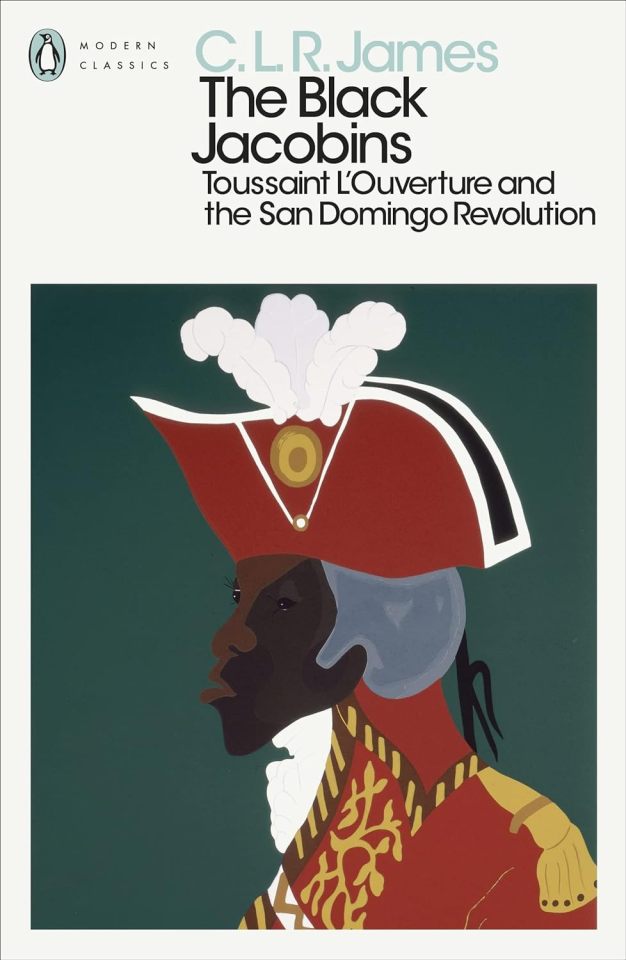
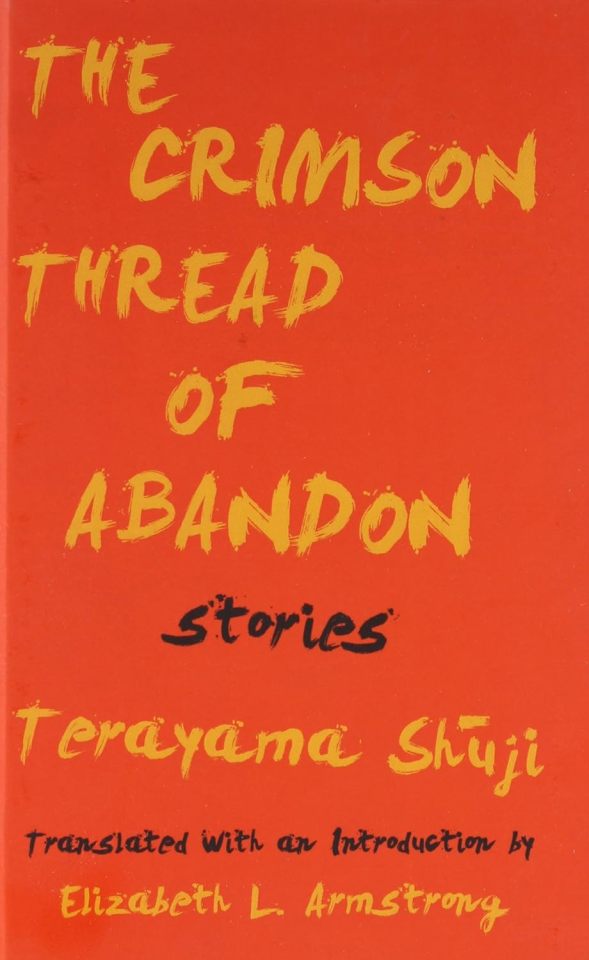
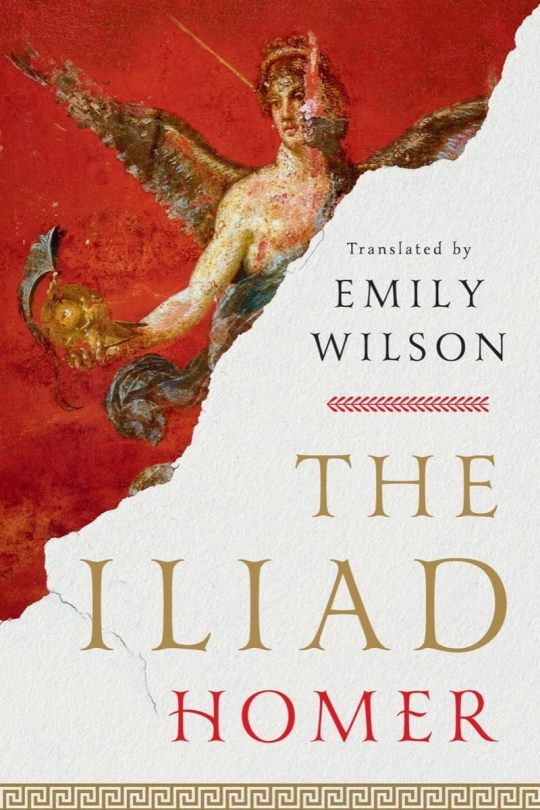
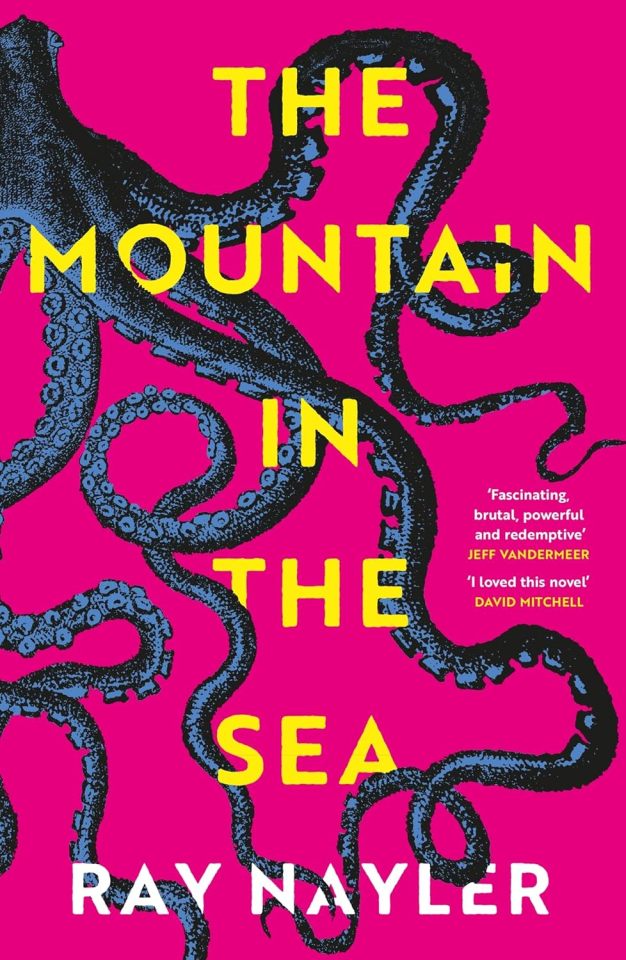
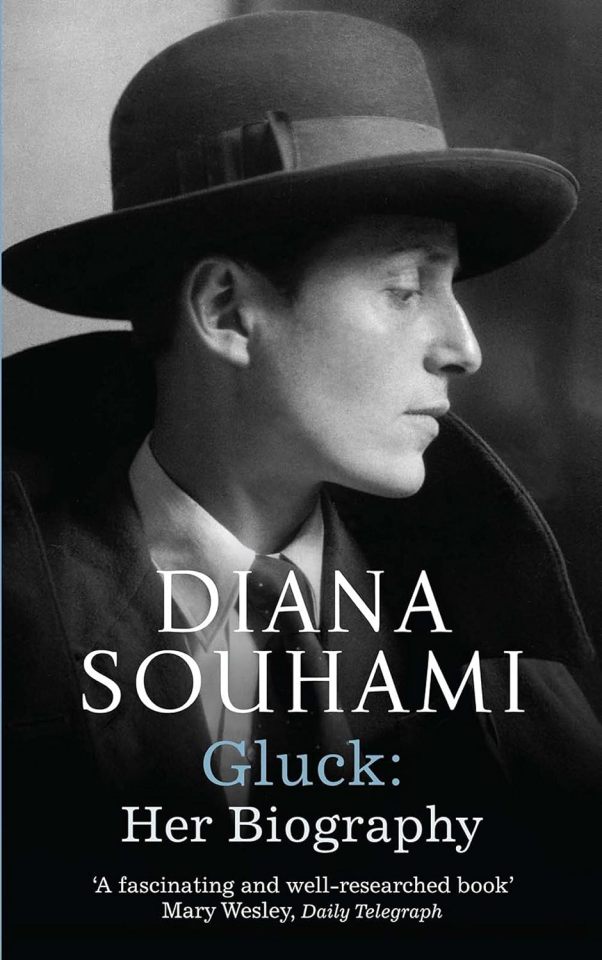
Dirtbag: Essays - Amber A'Lee Frost
Politicial memoir and sometime optimistic socialist theory from Chapo Trap House alumna Amber, who's been back on the show recently since Matt Christman (my beloved)'s medical leave.
The Black Jacobins: Toussaint L'Ouverture and the San Domingo Revolution - C.L.R. James
Partly research, partly an important and interesting piece of history. I got into reading about the Sons of Africa and Dolben's Act while writing my current WIP and, as that series kinda bleeds over into the French Revolution, this is very relevant.
The Crimson Thread of Abandon: Stories - Terayama Shuji (tr. Elizabeth L. Armstrong)
Terayama's short films and photography are amazing, so... high hopes here? Possibly even more so as I apparently have very little fiction on my tbr list. Burnout, you say? Nooo.
The Iliad tr. Emily Wilson
Everything I've seen about this translation looks great, so I'm interested to read it. Apparently it cuts right to the source material in a very honest way, but idk. It's all Greek to me. (sorry.)
The Mountain in the Sea - Ray Nayler
I've heard so many good things about this I'm a little nervous to start it, but it's on the 'when I have time' list. Also, because no company can resist building The Torture Nexus (though tbf plans were in the works before this book came out, and it's not quite the same thing), did you know you can still join Compassion in World Farming, Ocean Born Foundation, and over 70 other NGOs in campaigning to stop the planned Nueva Pescanova octopus farming project?
Gluck: Her Biography - Diana Souhami**
I bought this last spring and I will get around to reading it properly, I swear. Gluck was an interesting artist and a... difficult person, by most accounts. Admirable in many ways, perhaps. But. But! Also the reason commercial oil paints have consistent pigment levels and standards. The more you know.

Gratuitous Gluck painting! Medallion (YouWe) (1936) is a basic bitch choice because it's so iconic, but look me in the face and say it's not Peak Melodrama(tm). This Deco beast is the de facto marriage portrait commemorating Gluck and Nesta Obermer's relationship, beginning in earnest the night they saw Fritz Busch's Don Giovanni and 'felt the intensity of the music fused them into one.'
“Now it is out,” Gluck wrote to Nesta, “and to the rest of the Universe I call Beware! Beware! We are not to be trifled with.”
As I said, peak melodrama.
So, on to three Comfort Read faves and an excuse for a shelfie or two:
Something Wicked This Way Comes - Ray Bradbury
"God, how we get our fingers in each other’s clay. That’s friendship, each playing the potter to see what shape we can make of the other."
It is the autumn read. And I still kind of want to be femme!Mr. Dark.
Spleen - Olive Moore
"She did not want the stories that calm frightened children. She wanted to know why the child is frightened."
You probably can't call it a 'comfort' read exactly, but it's stark, complicated, and uncompromising. One for the Virginia Woolf girlies (gn), you might say.
The Complete Illuminated Books - William Blake
"As when a man dreams, he reflects not that his body sleeps."
Uh. Me like pretty pitchers? I was gifted this book years ago, having always been a Blake admirer. Last year, I was listening to a collab between Esoterica and TheArtTourist (formerly Several Circles) on Blake's personal mythology (something something gnostic mysticism) and I've been coming back to pick at it over and over ever since. Generally with a hot chocolate and a squishy blankie, which I think is necessary here.


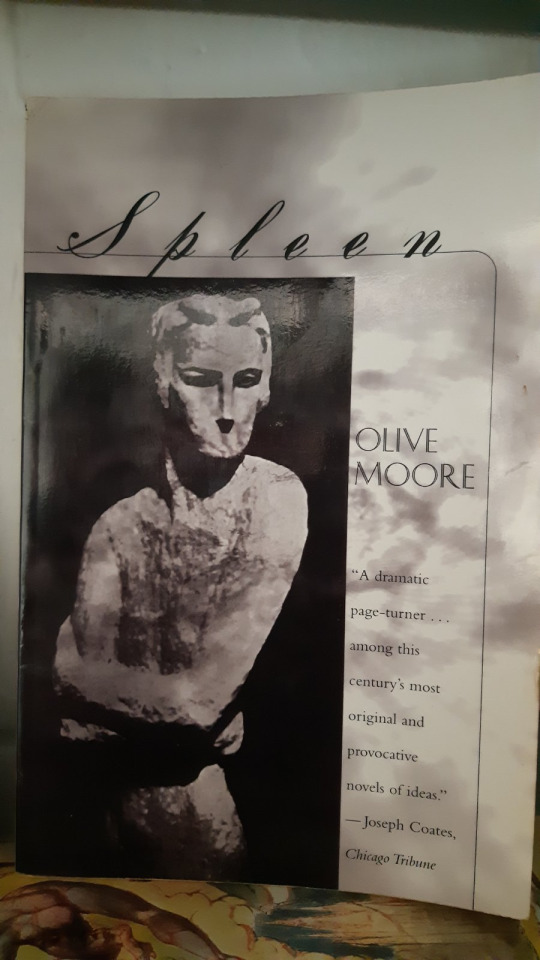

*Notable exceptions include:
Goodbye Tsgumi - Banana Yoshimoto. You should read this in an afternoon, then think wistfully about it six months later. Yoshimoto's style is easy and delicate, but primed with sharp authenticity.
the Wine and Song series from tumblr's own @eleanorkos, who is a wonderful writer, stylistically and narratively, and a joy to read.
Walking Through Clear Water in a Pool Painted Black - Cookie Mueller. John Waters fans know her best for Pink Flamingos etc., but her writing is... scorching. Sometimes perhaps too much so, but it's certainly zeitgeisty.
Alec - William di Canzio. The E.M. Forster sequel no one expected. I did like it, truly. It's just that I thought it would be a bit... more. And now I have to go scour AO3 because there's probably a 200k Maurice fanfic somewhere that handles class, identity, and intertextuality better and with more commitment. If not.. no. I'm not even entertaining the thought.
**There is admittedly Disk Horse around Gluck - who, while born into privilege, famously did not want to be addressed with any prenoms, prefixes, or signifiers of class/gender - and Pronouns. I think Souhami's gotten a fair amount of heat for 'Her Biography', though Gluck did use feminine pronouns in life. (Wearily taps the 'we cannot accurately assign contemporary labels to people who lived before they were coined in their current context; it's technically conjecture, however obvious it seems' sign.) Personally, I feel like if we're going to keep referring to Radclyffe Hall as a she/her lesbian and not acknowledge the possibility of any transmasc, fluid, or he/him identities for someone who was known primarily as 'John' and whose seminal novel featured an afab protagonist called Stephen who identifies with the contemporary view of homosexuality as 'inversion' then... I'm going to sit quietly with my knitting and stay out of it.
Okay, that's it. I overran, I know, but hey. tagging @s1ithers, @lesetoilesfous, @aria-i-adagio, @dreadfutures, @emungere, @barbex and @katehedge with intrigue and curiosity, but never any pressure :)
5 notes
·
View notes
Photo
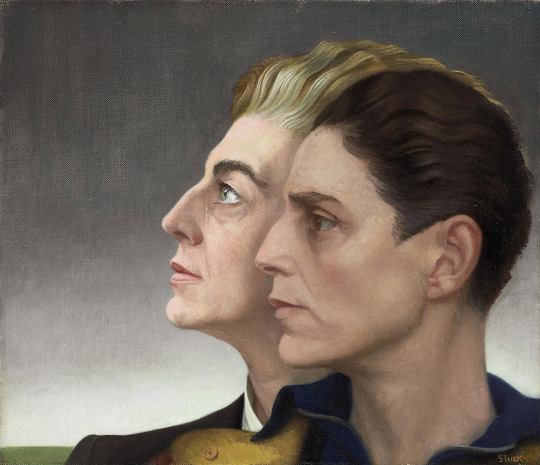
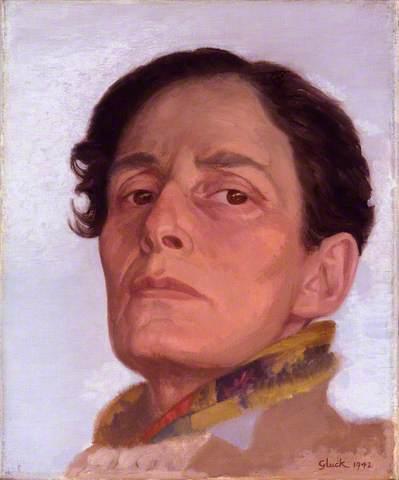
Queer artists 19/30 - Gluck
Gluck was a 20th century Jewish British painter. Born in London, Gluck moved to Lamorna, Cornwall with a fellow painter who similarly went by a single name, their surname Craig. Gluck would later speak of how the pair ran away together. In Lamorna, Gluck was part of an artistic community and there began to defy contemporary gender norms and adopt a masculine style of dress. They rejected the use of any first name or title, writing on the back of publicity prints of their paintings, "Please return in good condition to Gluck, no prefix, suffix or quotes."
Gluck was known for their portraits and paintings of flowers. Their best known painting is Medallion (1937), a portrait of them and their lover, Nesta Obermer, who they began a relationship with in 1936. The painting was inspired by an experience of going to the opera with Nesta to see Mozart's Don Giovanni. Gluck's biographer Diana Souhami writes, "They sat together in the third row and felt the intensity of the music fused them both into one person and matched their love."
[Image descriptions: Medallion (1937) depicts Gluck and Nesta in profile, both facing to the left. Gluck has short, dark hair and is looking straight ahead, while Nesta has slightly longer, blonde hair and is looking upward. Gluck (1942) is a self-portrait depicting Gluck in three-quarter profile looking at a the viewer with a serious expression.]
134 notes
·
View notes
Text
Gluck: Der revolutionäre britische Maler, der Geschlechtsnormen herausforderte
Hannah Gluckstein, besser bekannt als Gluck, war eine britische Malerin, die das traditionelle Geschlechterrollensystem ablehnte und keine weiblichen oder männlichen Anreden akzeptierte. Gluck wurde für ihre Porträts und Blumenbilder, sowie für ihr innovatives Design von Bilderrahmen bekannt. Sie war auch eine wichtige Figur in der lesbischen Kunstszene und hatte eine Beziehung zu Nesta Obermer,…

View On WordPress
0 notes
Photo
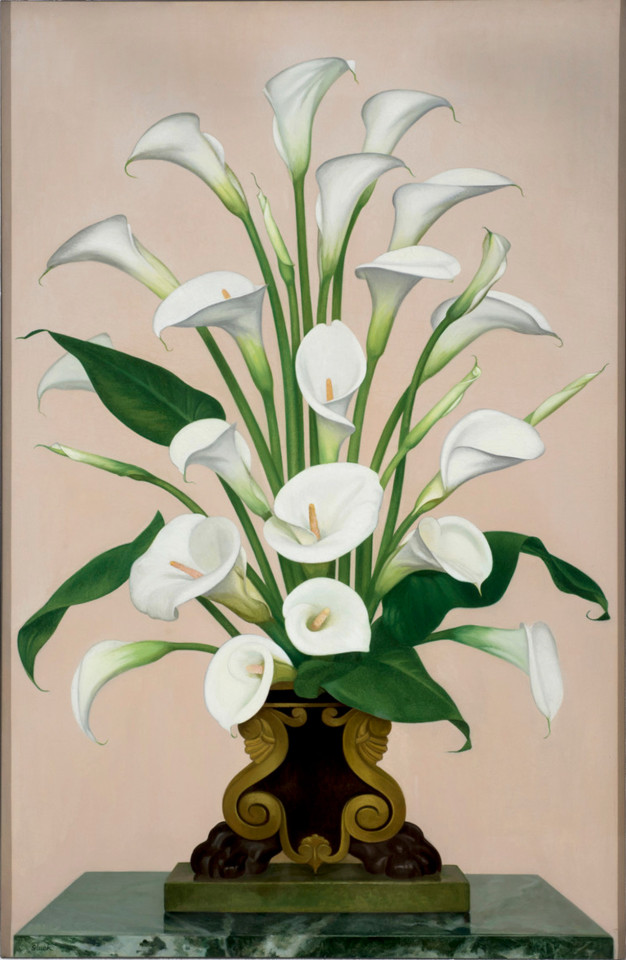
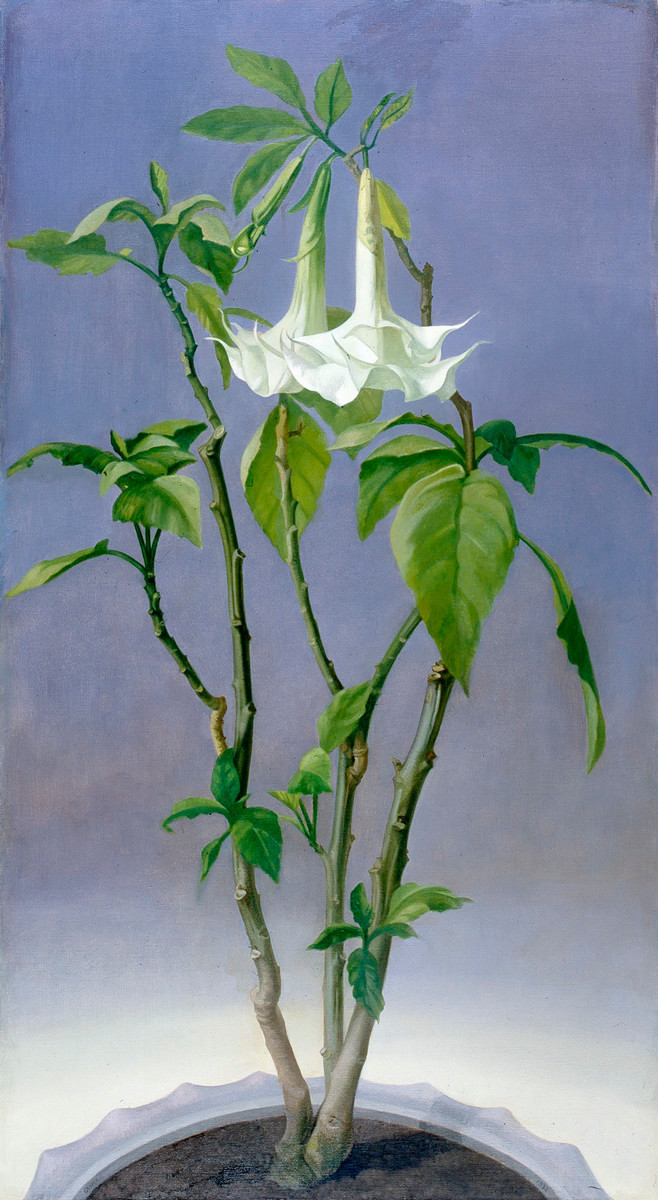
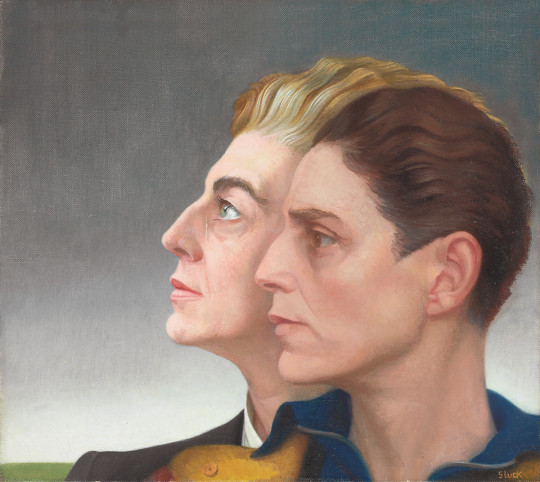
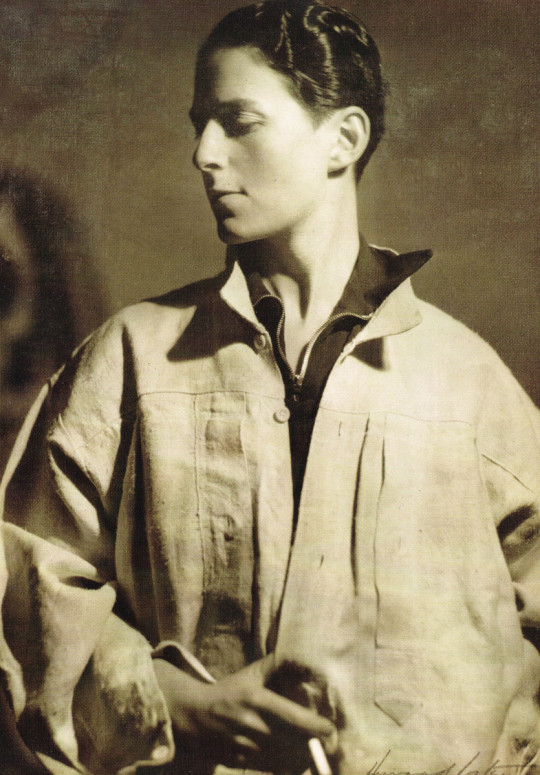
Gluck referred to Medallion (1936), her double portrait of herself and her lover Nesta Obermer, as the “YouWe” picture and their marriage picture. On 23 June 1936 they’d been to Fritz Busch’s production of Mozart’s Don Giovanni at Glyndebourne. They sat in the third row of the stalls and Gluck felt the intensity of the music fused them into one. The “YouWe” painting followed. It was her public declaration of love and commitment. “Now it is out,” she wrote to Nesta, “and to the rest of the Universe I call Beware! Beware! We are not to be trifled with.” —Diana Souhami
Source: Royal Academy
1 note
·
View note
Photo

Androgyny for The Day: "Medallion," by the artist called Gluck, in 1936 launched the coming out of lesbians and queers in Europe before World War II. Gluck--full name Hannah Gluckstein--referred to the double portrait of herself and her lover Nesta Obermer, as the “YouWe” picture and their marriage picture. It caused a scandal at the time--but today it looks like a serene portrait of two people in love, making their way through time. (See more here, from the Royal Academy website: http://bit.ly/2kinJzK)
1 note
·
View note
Text
Gluck
Hannah Gluckstein was born in the Capital of England, London, in an incredibly wealthy Jewish family. Gluck was an unconventional painter centred around Britain and lived with her mother, father and two brothers. Gluck attended St John’s Wood School of art for three years in 1913 onwards. In the 1920s to 1930s Gluck became wildly famous for her floral paintings and portraits. One of her most famously known paintings was the Medallion painted in 1936 of her and her partner, Nesta Obermer.
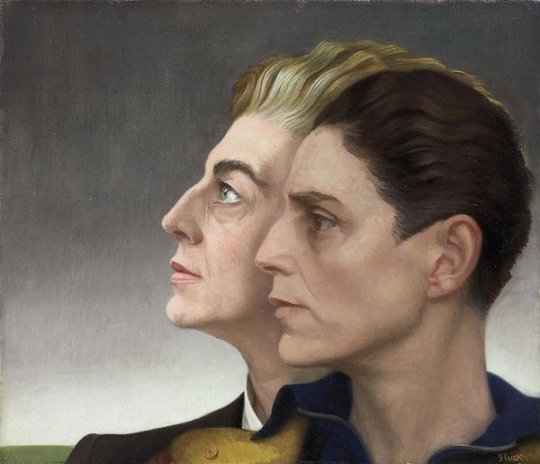
1 note
·
View note
Text
AUGUST 13: Hannah “Gluck” Gluckstein (1895-1978)
Known simply as Gluck – in her own words, “no prefix, suffix, or quotes” – the famous British painter Hannah Gluckstein was born on this day in 1895.

Hannah “Gluck” Gluckstein photographed by her friend Howard Coster (x).
Gluck was born into a wealthy Jewish family on August 13, 1985. Her father was the owner of Lyon’s Corner House, an upscale chain of tea shops, and her mother was a formerly popular American opera singer. Her parents were disapproving of their daughter’s artistic ambitions, but nevertheless, she went on to attend St. John’s Wood School of Art in London for three years and still received her sizable trust fund at the age of 21. With a burgeoning art career and new financial independence from her family, Gluck moved to Cornwall, bought a studio, cut her hair short, and began dressing in men’s clothes.
Although “Gluck” produced many landscape pieces throughout her career, it was her self portraits and the portraits of her lesbian friends that truly gripped the western art world and allowed her name to go down in history. Romaine Brooks’s painting of Gluck titled Peter (a Young English Girl), for example, was controversial in its day for its matter-of-fact depiction of Gluck’s butchness. Gluck would “marry” Nesta Obermer. The “marriage,” as Gluck called it, is depicted in one of her most well-known pieces, Medallion, which shows Gluck and Nesta in the audience of a performance of Don Giovanni. Gluck’s biographer wrote that “she felt the intensity of the music fused them into one person and matched their love.”

The double portrait of Gluck and her partner Nesta Obermer was finished in 1937 and titled Medallion. Gluck favored it for depicting the moment she “married” her “darling wife” and dubbed it the “YouWe” picture (x).
When World War II consumed Europe, Gluck fell into hard financial times and she and Nesta eventually broke off their relationship. In the 1950s, she would start seeing a woman named Edith Shackleton Heald and the two would stay together until Edith’s death. Although she somewhat retired from painting in her later years, Gluck’s very last creation was a painting of a decomposing fish head titled Rage, Rage against the Dying of the Light. She would pass away on January 10, 1978.
-LC
#365daysoflesbians#gluck#hannah gluckstein#art history#lesbian history#wlw history#gay history#lgbt history#lgbtq history#lesbian#wlw#sapphic#lgbt#lgbtq#gay#lesbian aritsts#lesbian art#1890s#uk#people
121 notes
·
View notes
Photo
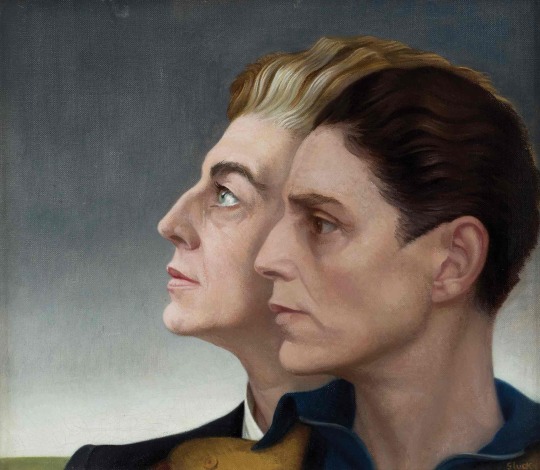
Medallion (YouWe), 1937
Hannah Gluckstein, aka Gluck, born to a wealthy British family, become an artist with a string of high-profile lovers – and created emotive, humanistic paintings.
Contance Spry, a florist and also her lover, introduced Gluck to American socialite Nesta Obermer (pictured here in a dual portrait with the artist), who she fell in love with. This painting was later used as the cover of Radclyffe Hall’s 1928 novel The Well of Loneliness, about a lesbian relationship.
4 notes
·
View notes
Photo

Gluck, Medallion (1937)
32 notes
·
View notes